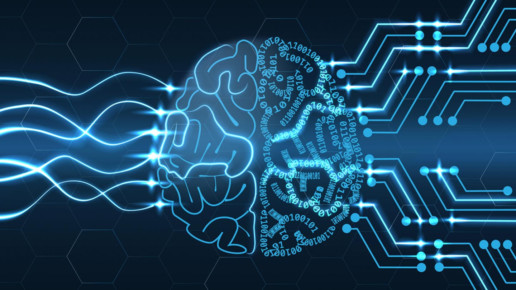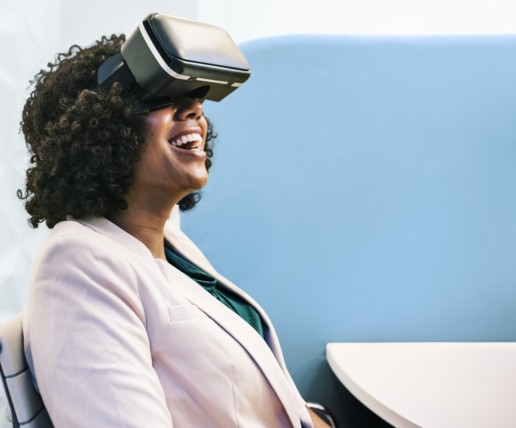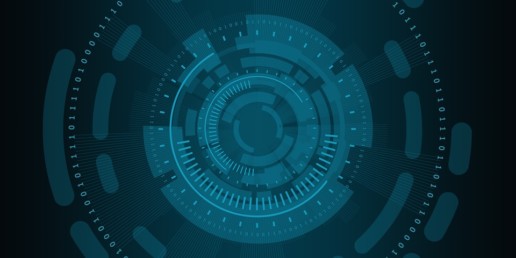AI helps applicants hone their soft skills
Due to the coronavirus causing many job losses, many are searching for a new place of employment. In competing markets, job candidates may now have to tune their skills and artificial intelligence can help. Read this blog post to learn more.
As millions of workers look for new positions due to the coronavirus pandemic, artificial intelligence can help job candidates fine-tune their interview skills and stand out from the crowd.
HR tech and recruiting company, CareerArc, launched a new interview assessment tool that uses artificial intelligence to highlight candidates’ soft skills, like organization and creativity. The feature, released this week as part of CareerArc Outplacement, helps job seekers learn how to market those traits on their resumes and LinkedIn profiles — which makes it easier for employers to identify the best candidates for open positions, CareerArc executives say.
“The most important thing job seekers can do right now is to use this time to make themselves more marketable, and our coaches are on standby seven days a week to help do just that,” says Yair Riemer, president of career transition services at CareerArc. “With this new assessment, our career coaches can better counsel job seekers to emphasize their unique strengths, while building the confidence they need to find their next opportunity as quickly as possible.”
Since March, more than 22 million people in the United States have been left unemployed in the wake of the coronavirus pandemic, according to the Bureau of Labor Statistics. Job seekers are increasingly turning to placement services — Riemer says 99% of CareerArc’s clients are currently unemployed.
The CareerArc assessment starts with having a user record and upload three videos of themselves responding to common interview questions. The software uses psychometric technology, pioneered by experts at University of Southern California and Purdue University, to analyze facial expressions to determine a candidate’s soft skills. Riemer says the software can determine whether a candidate is organized, creative, a formal or informal speaker and whether they communicate assertively or are more laid back.
“Soft skills are harder to learn, and it’s important they align with the job description because they definitely impact job performance,” Riemer says. “Having candidates who are self-aware of how their traits fit the role means [employers] will find someone who can meaningfully contribute to the company.”
Once they have an assessment of their traits, CareerArc places users with one of their career coaches to help decipher the results. The coaches also help candidates use the results to tweak their online presence and application materials.
“Most people don’t know how to highlight or market soft skills; resumes typically focus on hard skills,” Riemer says. “But our coaches are able to pick out keywords that grab the attention of recruiters and employers to help our candidates get noticed. Candidates will also come away more confident, with the skills to talk about their personal strengths.”
Going forward, Riemer says he’d like to extend the software to employers and recruiters so they can use it as part of their candidate evaluation process. He also sees potential for employers to offer the program to their employees as a means of improving their intrapersonal skills as they seek advancement opportunities within the company. CareerArc plans to hear from employers before pursuing either idea.
In the meantime, CareerArc plans to monitor the program’s results as job seekers continue to navigate the COVID-19 crisis.
“With the current job market, job seekers need tools and insights that will help them stand out from the crowd,” CareerArc CEO Robin D. Richards says.
SOURCE: Webster, K. (06 May 2020) "AI helps applicants hone their soft skills" (Web Blog Post). Retrieved from https://www.employeebenefitadviser.com/news/ai-helps-applicants-home-in-on-their-soft-skills
Employees are fearful of being replaced by automation
Technological advances are starting to scare employees regarding job security. Although automation is creating a scare, companies are using technology to transform and improve productivity within their organization. Read this blog post to learn more regarding the benefits of automation technology in the workplace.
Automation is transforming businesses and directly impacting bottom lines as a result of improved productivity. But it also raises employees’ concerns about their job security, according to a new study by research firm Forrester and UiPath, a robotic process automation (RPA) software company.
Some 41% of companies say their employees are concerned that their existing digital skills may not match what their job will require in the future, the study finds. However, by training employees, providing them vocational courses, or encouraging them to pursue digital qualifications, companies can help them to overcome fears around automation and embrace it as a productivity-boosting asset.
“We need programs that not only train you to be a better employee at an institution, but advances your digital skills as well,” said Craig Le Clair, vice president and principal analyst at Forrester, speaking during a recent webinar. “We need a new form of education and training that can keep pace with the technology, particularly due to automation.”
Companies having their own training programs at work — trying to mimic the kind of experience that you have in traditional education — is a legitimate and important development, because traditional education cannot keep pace with what's going on, Le Clair said.
Companies are increasingly investing in automation — including technology like AI and RPA — and is now the driver of most organizations’ digital transformation strategies. For 66% of companies in the study, RPA software spend is going to increase by at least 5% over the next 12 months. Forrester predicts that the RPA services market will reach $7.7 billion, and eventually balloon to $12 billion by 2023.
The dynamics of the labor market, technical feasibility, and acceptance of the more advanced AI building blocks like deep learning and conversational intelligence are just some of the factors that will determine the pace of workforce automation.
Automation can not only benefit employers, but also employees. Automating repetitive, rule-based tasks enables employees to focus on higher-value activities that require advanced skills and improves employee engagement. The study found that a 5% improvement in employee engagement leads to a 3% increase in revenue, indicating that more engaged employees means higher growth.
“Organizations can view the future of work as a competency, as something that they have a view on and has a distinguishing approach to,” Le Clair said. “This is going to help with recruiting and retention, and help [companies] deal with these transformations that are occurring. It can change the way you serve customers for the better. You can get more of your humans working on the thing that humans do the best, which is carrying on conversations with other humans. [Automation helps you] extract that labor value and move it into the right places.”
SOURCE: Nedlund, E. (12 February 2020) "Employees are fearful of being replaced by automation" (Web Blog Post). Retrieved from https://www.benefitnews.com/news/employees-are-fearful-of-being-replaced-by-automation
How Next-Gen Technology Can Keep HR Data Safe
In 2018, the FBI reported having 350,000 complaints of internet crimes, which is a rise of 23 percent over five years. With an increase in internet crimes, HR departments are turning to security approaches that are powered by artificial intelligence (AI). Read this blog post to learn more about how artificial intelligence is helping companies with cybersecurity.
As hackers grow ever-more inventive and data privacy laws are enacted around the globe, HR leaders are faced with the challenge of protecting and storing sensitive HR data but not curtailing employees' ability to use that data to make timely workforce decisions.
But there may not be enough cybersecurity colleagues to call upon for advice and technical assistance, which compounds those challenges. Approximately 65 percent of companies reported a cybersecurity staff shortage last year, according to the 2019 Cybersecurity Workforce Study conducted by (ISC)2, an international nonprofit association for IT professionals. As a result, more companies are turning to security strategies that don't require human intervention, such as cybersecurity powered by artificial intelligence (AI) that can proactively monitor and neutralize new kinds of cyberthreats.
New Strategies for More-Sophisticated Attacks
Research suggests that concerns over data security are occupying more of HR leaders' time and resources. The 2019-2020 Sierra-Cedar HR Systems Survey found a 17 percent increase from the prior year's survey in the number of respondents deploying cybersecurity strategies, with 70 percent of HR organizations reporting they have and regularly update such a strategy. That's good news, because the FBI reported receiving 350,000 complaints of Internet crimes in 2018, a rise of 23 percent over five years. Those crimes caused an estimated $2.7 billion in financial losses.
Security experts say the loss of sensitive data like payroll information, Social Security numbers and notes from internal investigations or employee assessments has implications far beyond the HR department.
"When HR systems are breached, it goes beyond the personal data stolen, because HR is central to so many processes across the organization," said Corey Williams, vice president of marketing and strategy at Idaptive, a cybersecurity firm in Santa Clara, Calif. "HR systems are the starting point for much of the access employees have throughout the organization. HR data doesn't sit on an island like other data, and when you have vulnerabilities at the HR level, you're exposing the entire enterprise to wider attacks."
AI-powered security tools represent a new approach to combating threats to HR data. While not a cure-all, these technologies can protect against malicious attacks driven by automated malware and have capabilities, such as pattern recognition, that can identify suspicious behavior and block potential problems or threatening online traffic in real time.
To protect against insider threats, whether malicious or from workers not following sound security practices, some AI-based cybersecurity tools can be trained to learn employees' behaviors when using corporate networks. Research shows that such threats are a growing problem. Insiders caused 48 percent of reported data breaches in organizations in 2019, according to a recent benchmark study from Cambridge, Mass.-based Forrester Research, up from 26 percent of total data breaches in 2015.
More companies are adopting "zero trust" policies that feature a "never trust, always verify" approach to network access or identity authentication and employ tools like multifactor authentication (MFA). MFA is a way to confirm user identities through at least two different factors. In the last year, according to the Sierra-Cedar survey, large organizations increased their use of MFA by 20 percent, and approximately 55 percent of small organizations reported using MFA for HR applications.
Williams said stolen or weak user credentials is still the top cause of data breaches in organizations. "We've seen growing sophistication in the way passwords and credentials get stolen," Williams said. "That includes malware, hackers writing more convincing phishing e-mails that get employees to click on harmful links and other approaches. Companies have found that depending on passwords alone for access is becoming untenable."
Balancing Security with the User Experience
HR leaders have to strike a balance between taking the right data-security measures and ensuring employees can still use HR networks and software in efficient and user-friendly ways—a balance that ideally won't make the workforce feel excessively monitored or handcuffed when using technology.
"Security is often viewed as a teeter-totter, where you are either increasing data security or you are improving the user experience with technology," Williams said. "But it doesn't have to be an either-or scenario."
For example, employees who typically access the same corporate networks or applications in the same fashion likely don't need additional security oversight, but someone accessing that same system from a country he's never been to before and with a different device would need more controls.
"We're seeing more innovation in applying security tools to separate high-risk from low-risk system access," Williams said.
HR leaders also can help enhance security by encouraging their companies to re-evaluate user access policies, experts say. "As people work for a long time in companies, they tend to accumulate access to systems, and that access doesn't necessarily get taken away as they move up or around a company," Williams said. "Employees are often 'over-provisioned' in terms of their access to sensitive data in systems, which can create increased vulnerability for companies." Automated processes tied to the life cycle management of employees can ensure system access is changed or removed as people change roles in a company, he said.
James Graham-Cumming, chief technology officer for Cloudflare, a cybersecurity company in San Francisco, said being more judicious in granting data access is a wise but sometimes overlooked security strategy. "It's not uncommon for CEOs or other senior leaders in a company to have access to all or most corporate systems because they simply feel a need for that access," Graham-Cumming said. "Yet these are more-visible or even public figures who are often targets for hacking. The reality is your C-suite or vice presidents may not need access to all of your systems."
Managing Vendor Risk
Data security and privacy threats can grow as HR functions add more technology platforms to their ecosystems and create more integrations with third-party providers. A recent study by research and advisory firm Gartner found that because human capital management systems are built to integrate with many third-party services—such as LinkedIn, for example—those integrations can expose organizations to risk through "misconfigurations" that result in unintentional data leakage. Depending on the level of integration, problems with security in vendor systems can open the door for attackers, the Gartner study found, as was the case with the retailer Target in 2014.
Security experts say HR leaders should ensure vendors have best-practice data security and privacy protocols in place, such as MFA, in addition to passing an external Service Organization Control, or SOC, 2 audit, which confirms they're in compliance with recommended practices for data security, processing integrity, ensuring privacy and more.
Jared Lucas, chief people officer with the cybersecurity firm MobileIron in San Francisco, said security-related employee training also is more important than ever as malware grows more sophisticated, phishing attacks increase and bad actors use AI-powered methods to hack corporate systems.
"Effective, regularly updated training in what to look for and what to be wary of can close a lot of holes in a company's data security strategy," Lucas said.
SOURCE: Zielinski, D. (10 February 2020) "How Next-Gen Technology Can Keep HR Data Safe" (Web Blog Post). Retrieved from https://www.shrm.org/resourcesandtools/hr-topics/technology/pages/next-gen-technology-can-keep-hr-data-safe.aspx
Implementing AI Technology for HR
Artificial intelligence (AI) has taken the tasks of collecting, copying, entering and checking data off of HR professional's hands. With advancements in technology, AI has become a way to open a variety of opportunities to influence a company's workflow. Read this blog post to learn about artificial intelligence and how it's developing HR managers and leaders.
When HR managers embark on implementing artificial intelligence (AI) into their company's workflow, they'll be grappling with a disruptive technology that changes the way people from HR leaders to recruiters to front-line employees work.
That may be why PwC's latest Human Resource Technology Survey of 599 HR and information technology (IT) leaders worldwide shows that those leaders are cautious about leveraging the technology to drive HR functions.
In fact, 63 percent of those surveyed have not yet implemented artificial intelligence for HR, and many cite various reasons that influenced their decision not to do so, including:
•Cost of implementation.
•Complexity of integration into the existing IT infrastructure.
•Lack of skilled staff.
•Lack of compelling use cases that can be tied to business outcomes.
But while they are hesitant to jump into using AI, 42 percent of respondents said they plan to implement AI for HR over the next one to three years. The technology opens significant possibilities.
"Human resource executives want their teams to focus on meaningful tasks, such as interpreting data, decision-making, storytelling and strategies that enrich the worker experience, which is what AI solutions can offer. Without AI, HR professionals are relegated to collecting, copying, entering, re-entering and checking data," said Mike Brennan, president of Leapgen, a Manhattan Beach, Calif.-based HR consulting firm.
HR leaders will have to find the right tools, team with the right partners, and find the best opportunities to apply AI to HR functions without causing employee anxiety.
Schneider Electric's Story
Andrew Saidy, vice president of talent digitization, talent acquisition and mobility at Schneider Electric, a multinational company based in Paris, oversaw the implementation of an AI-driven platform that revolutionized the talent mobility and career development processes at his company.
Three important factors pushed Schneider Electric, which employs approximately 144,000 employees across 100 countries, to make the change. First, more than half of Schneider's employees are Millennials, a generational group whose members change jobs more frequently than workers in other age groups. According to the U.S. Bureau of Labor Statistics, the average job tenure of Millennials is 2.8 years.
Second, 47 percent of Schneider employees surveyed in exit interviews said they were leaving because they couldn't find their next opportunity within the organization.
Third, the process of matching employees to job opportunities within the company was laborious, cumbersome and lengthy.
"Recruiters were spending weeks waiting for responses, making phone calls, sifting through CVs and selecting which candidates would be chosen for interviews," Saidy said.
With a clearly defined use case for its AI strategy, the company chose to develop a cloud-based, AI-driven talent market. The HR team had to decide whether to build or buy a solution.
"This is an idea we toyed with at the start because we are a technology company, we are a digital company, and we are leaders in digital energy management," Saidy said. "We have a strong team of enterprise IT developers, and we could have had the ability to build a talent platform internally as opposed to buying something outside of the market."
What surprised Schneider's HR team was that there are many vendors offering AI solutions for HR tasks, but having so many AI solution providers to choose from presents other issues.
"You have to be careful when you select a company for your AI project," he said. The vendors "need to be financially stable" and need to have "a clear product road map and customers with proven success. You can't just go for whoever is claiming to provide a solution."
After a three-month search, which included testing vendors' algorithms, Schneider's HR and digital teams decided to buy an internal talent product from Gloat, an Israeli technology company. The platform, called Open Talent Market, leverages AI to match employee resumes with open positions, including long-term jobs and short-term projects.
Part of the software evaluation involved letting employees register on the site and upload their education and experience to get a sense of whether they thought the tool was intuitive, easy to use and engaging. Schneider used a Net Promoter Score to assess employees' experience and enthusiasm for the tool.
The company monitored the number of employee registrations, short-term and long-term jobs that appeared on the site, and successful matches of qualified employees to job posts.
Schneider's HR team also tested the algorithm's ability to adequately address bias and evaluated its security features. Schneider chose software that doesn't require candidates to enter information related to gender or race, or place or date of birth.
Keeping in mind the difficulties Amazon experienced when it built an AI-driven recruiting system that perpetuated gender bias, Schneider is mindful that many of its jobs such as engineer, field technician or electrical engineer have typically been filled by male candidates, Saidy said.
Schneider's technical team also carefully considered the software's security capabilities, measures to protect from data breaches and secure integrations. This was particularly important when considering that Open Talent Market is connected to the company's applicant tracking system, learning management system and human resource information system, as well as LinkedIn.
Recruiter Adjustment
Since its launch in September 2018, Open Talent Market has put Schneider's managers in the driver's seat and has changed the role of some of the company's 200 recruiters—an adjustment that hasn't always been smooth, Saidy said.
"Initially, some recruiters had reservations on the Open Talent Market because of the way it changed their jobs [by giving more control to hiring managers] and took away from recruiters the tasks of sourcing and shortlisting internal candidates, now done by the platform."
Making sure recruiters continue to be motivated, engaged and enthusiastic about their job as their tasks change was a key consideration, Saidy said.
"To address this, we focused on why we put the Open Talent Market in place, what is in it for the recruiters, and how they reinvest their time consulting and supporting managers as well as employees' internal mobility. Keeping the lines of communication open with the teams is an especially important pillar of a successful change adoption."
SOURCE: Lewis, N. (09 January 2020) "Implementing AI Technology for HR" (Web Blog Post). Retrieved from shrm.org/ResourcesAndTools/hr-topics/technology/Pages/Implementing-AI-Technology-HR.aspxA
New tech helps HR pros practice hiring and firing — in virtual reality
A new platform from Talespin allows employees to practice challenging social situations, like the act of hiring and firing an employee, beforehand. Continue reading this blog post to learn more.
What if HR professionals could practice hiring and firing someone before they even set foot in the office? Virtual reality and artificial intelligence may be closer to making that a reality for some employers.
Talespin, a developer of virtual reality technology has released a new platform that allows employees to practice challenging social situations. The platform, called its Virtual Human Technology, is meant to mimic typical conversations that an employee might have at work. The software can simulate anything from performance reviews, to leadership training, sales conversations or even firing.
“We’re thinking holistically about the employee life cycle and how spatial computing is going to affect that,” says Kyle Jackson, CEO of Talespin.
Talespin aims to evoke real human emotions and give employees a sense of the best way to handle a difficult situation, Jackson says. The platform demo, for example, puts users in the shoes of an HR manager and asks them to fire an employee named Barry. Barry is an AI-powered virtual character that displays realistic human responses, like anger, when a user tells him that he has been terminated.
Users can be successful or unsuccessful at terminating Barry and the platform provides feedback on how they can improve these skills over time. The system can be tailored to provide responses based on the specific needs of the employer, Jackson says.
“The system can record all sorts of things: from your sentiment, to what you say, what branches did you activate, what different paths of process did you go down. With all that data it’s a question of what’s the learning objective and what’s the learning outcome that you’re looking for?” he says.
While the platform is best used in virtual reality, users can access it via desktop, mobile or audio only. Jackson says the company is deploying the platform with five employers in the telecommunications, automotive, insurance and consumer packaged goods industries. Farmers Insurance is already using Talespin technology to train new hires. Employers using the software pay per monthly active user plus the cost of the module, Jackson says.
Some employers are investing in AI and virtual reality as a way to attract and retain new talent. Pharmaceutical company Takeda, for instance, combined 360-degree photographs and an interactive map of its Cambridge, Massachusetts campus to create a virtual reality office tour for current and potential employees.
Jackson says they’ve heard from employers that poor treatment from a manager has in some cases, led to employee turnover. A VR platform like Virtual Human Technology can help managers develop their soft skills for interacting with employees and potentially improve retention.
“It’s not a technology problem, it’s not an efficiency problem. It’s really a people problem,” he says. “It’s the one area that’s really hard to fix.”
SOURCE: Hroncich, C. (8 March 2019) "New tech helps HR pros practice hiring and firing — in virtual reality" (Web Blog Post). Retrieved from https://www.benefitnews.com/news/hr-tech-helps-practice-hiring-and-firing-in-virtual-reality?brief=00000152-14a7-d1cc-a5fa-7cffccf00000
Artificial intelligence enthusiasm outpacing adoption
A new survey by the RELX Group reports that adoption of artificial intelligence and machine learning is lagging among key decision makers. Read this blog post from Employee Benefit News to learn more.
Artificial intelligence and machine learning have become essential for organizations to stay competitive. But adoption is lagging even among key decision-makers championing change.
That is the finding of a new survey by the RELX Group, a global provider of information and analytics. The company surveyed 1,000 U.S.-based senior executives across government, healthcare, insurance, legal, science/medical and banking in September 2018, and found that 88% agree that AI and machine learning will help their businesses be more competitive.
While the value of the technologies is clear to executives, only 56% of organizations use machine learning or AI. In addition, only 18% of those surveyed plan to increase investment in these technologies.
“Organizations [that] can successfully use emerging technologies such as AI and machine learning to provide their customers with better products and advanced analytics can emerge as the leaders of the future,” said Kumsal Bayazit, chairman of RELX Group’s Technology Forum.
“While awareness of these technologies and their benefits is higher than ever before, endorsement from key decision makers has not been enough to spark matching levels of adoption,” Bayazit said.
The study showed that AI and machine learning are making their mark, with 69% of those surveyed saying the technologies have had a positive impact on their industry. Machine learning and AI are helping solve challenges by automating decision processes (cited by 40%); improving customer retention (36 percent); and detecting fraud, waste and abuse (33%).
This story originally appeared in Information Management.
SOURCE: Violino, B. (2 January 2019) "Artificial intelligence enthusiasm outpacing adoption" (Web Blog Post). Retrieved from https://www.benefitnews.com/news/artificial-intelligence-enthusiasm-outpacing-adoption?feed=00000152-a2fb-d118-ab57-b3ff6e310000
How AI can predict the employees who are about to quit
Employers are now utilizing artificial intelligence (AI) to help predict how likely it is that an employee will stay with their company. Read this blog post to learn more.
Tim Reilly had a problem: Employees at Benchmark's senior living facilities kept quitting.
Reilly, vice president of human resources at Benchmark, a Massachusetts-based assisted living facility provider with employees throughout the Northeast, was consistently frustrated with the number of employees that were leaving their jobs. Staff turnover was climbing toward 50%, and after many approaches to improve retention, Benchmark turned to Arena, a platform that uses artificial intelligence to predict how likely it is that an employee will stay in their job.
“Our new vision is about human connection,” he says. “With a turnover rate that’s double digits, how do you really transform lives or have that major impact and human connection with people who are changing rapidly?”
Since Benchmark started using Arena, staff turnover has fallen 10%, compared to the same time last year. During the hiring process, Arena looks at third-party data, like labor market statistics, combined with applicants' resume information and an employee assessment that will give them a better sense of how long a candidate is likely to stay in a role.
“The core problem we’re solving is that individuals aren’t always great at hiring,” says Michael Rosenbaum, chairman of Arena. “Job applicants don’t always know where they’re likely to be happiest. By using the predictive power of data, we’re essentially helping to answer that question.”
Arena isn’t interested in how an employee responds to assessment questions, he says. They’re much more interested in how employees approach the questions.
“What you’re really doing is your collecting some information about how people react to stress,” Rosenbaum adds.
For example, if an employee is applying for a housekeeping role, Arena may give them a timed advanced math question to complete — something they may never use in their actual job. Arena then studies how the candidate responds to the question — analyzing key strokes and tracking how the individual tackles the challenge. The software can then get a better sense of how an applicant responds under pressure.
Overtime, Arena’s algorithm learns from the data it collects. The system tracks how long a specific employee stays at the company and can then better predict, moving forward, whether other employees with similar characteristics will stay.
“Overtime they are able to sort of refine that prediction about those that are most likely to stay, or be retained with our organization,” Reilly says. “They may also make a prediction on someone who might not last very long.”
Reilly says he’s been encouraging hiring managers at the facilities to use the data given to them by Arena to take a closer look at the candidates the platform rates as highly likely to stay in their roles. Although it’s ultimately up to the hiring manager who they select.
“Focus your time on the [candidates] that are more likely to stay with us longer,” Reilly says.
For now, Arena exclusively works with healthcare companies. The platform is currently being used by companies like Sunrise Senior Living and the Mount Sinai Health System in New York. Moving forward, Rosenbaum says, they’re hoping to get into other industries, although he would not specify which.
Rosenbaum says Arena is not only focused on improving the quality of life for employees, but also for the patients and seniors that use the facilities. The happiness of patients, he says, is closely tied to those that are caring for them.
“Is someone who is in a senior living community happy? Do they have a positive experience? It is very closely related to who’s caring for them, who’s supporting them,” he says.
This article originally appeared in Employee Benefit News.
SOURCE: Hroncich, C. (15 November 2018) "How AI can predict the employees who are about to quit" (Web Blog Post). Retrieved from: https://www.employeebenefitadviser.com/news/how-ai-can-predict-the-employees-who-are-about-to-quit?brief=00000152-1443-d1cc-a5fa-7cfba3c60000







